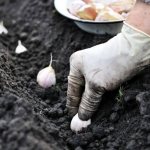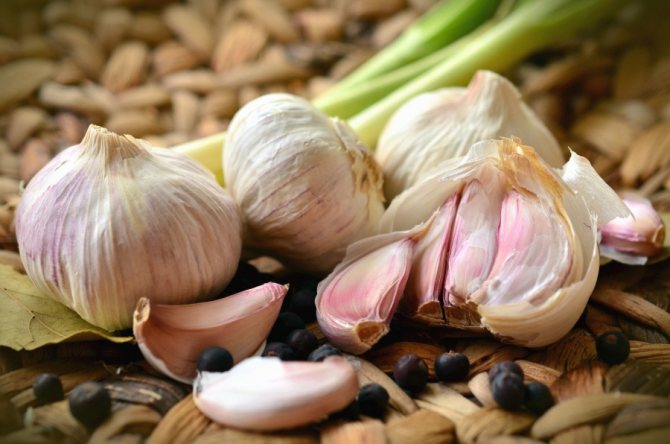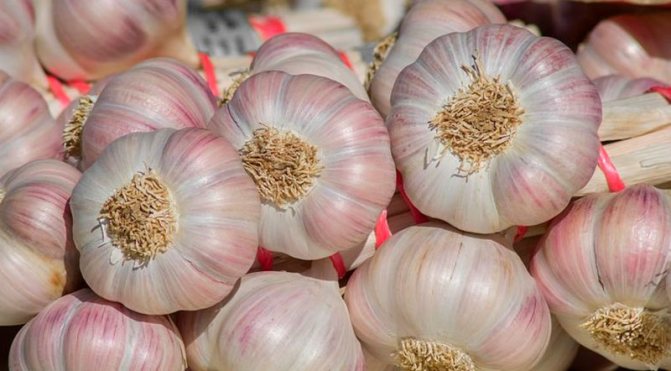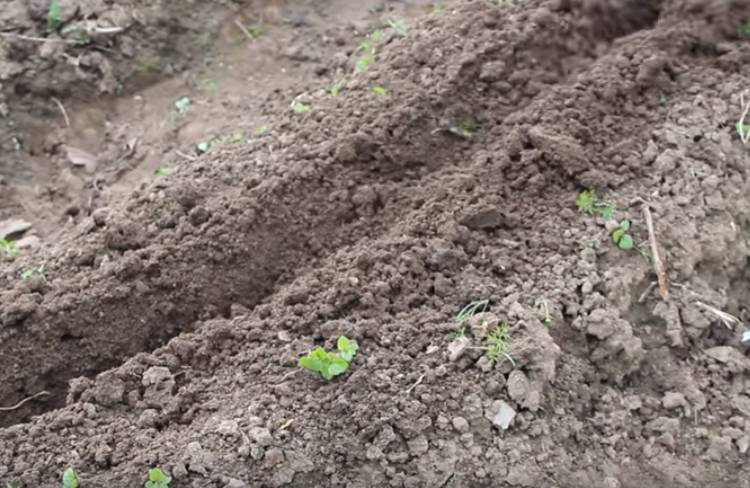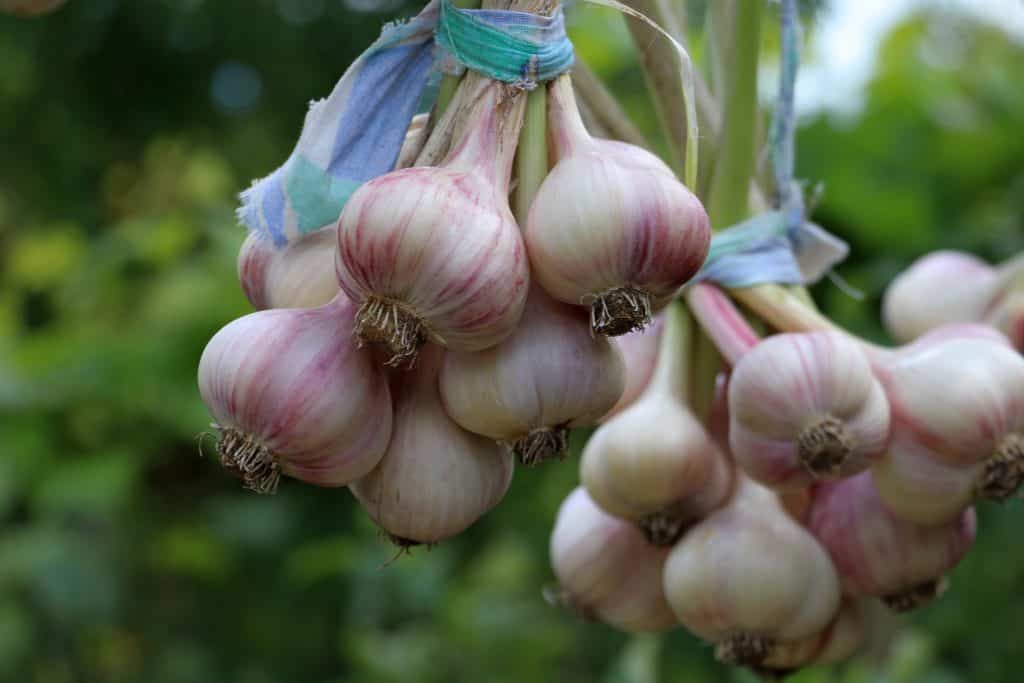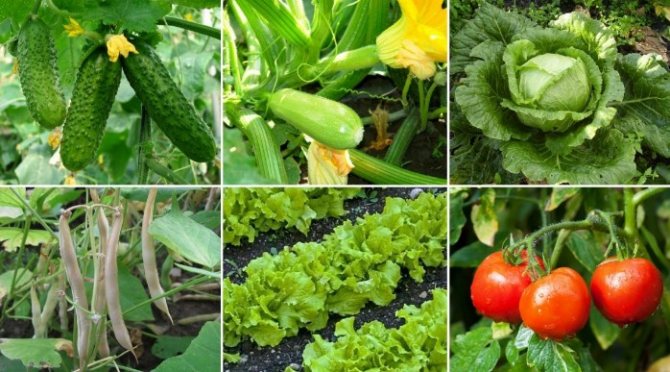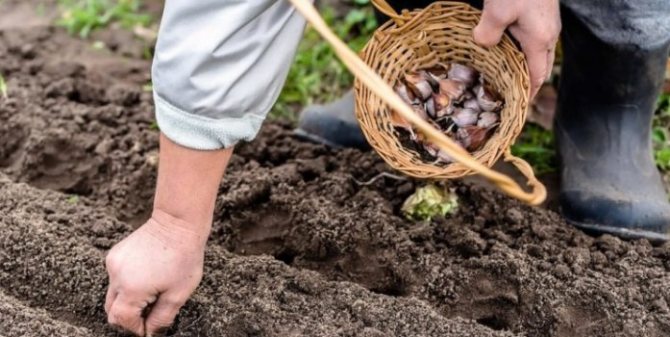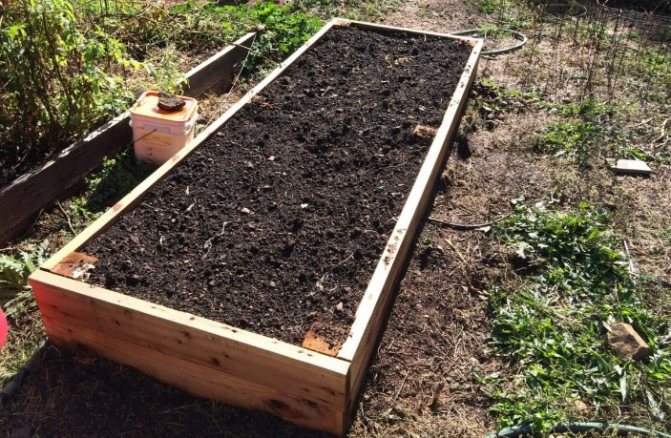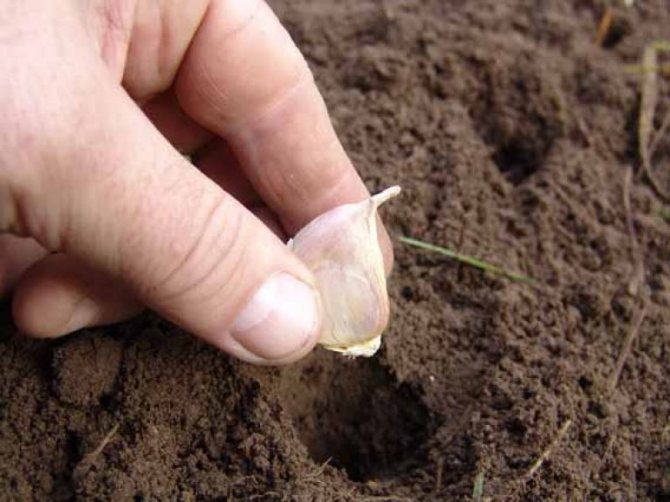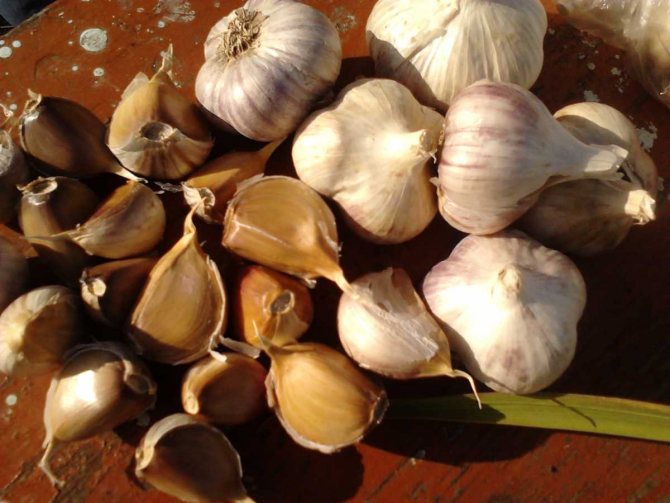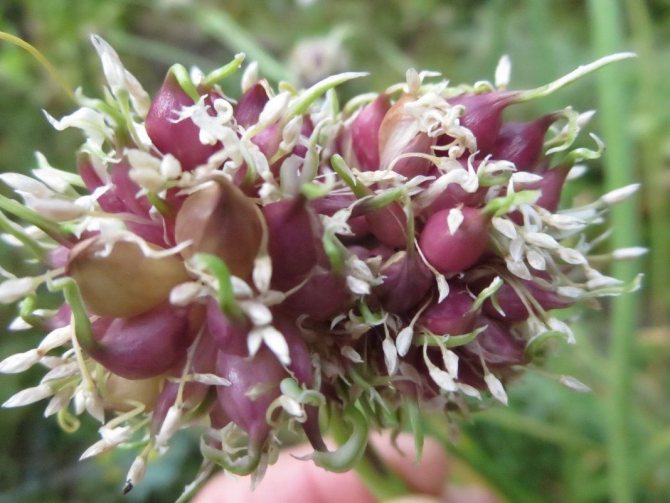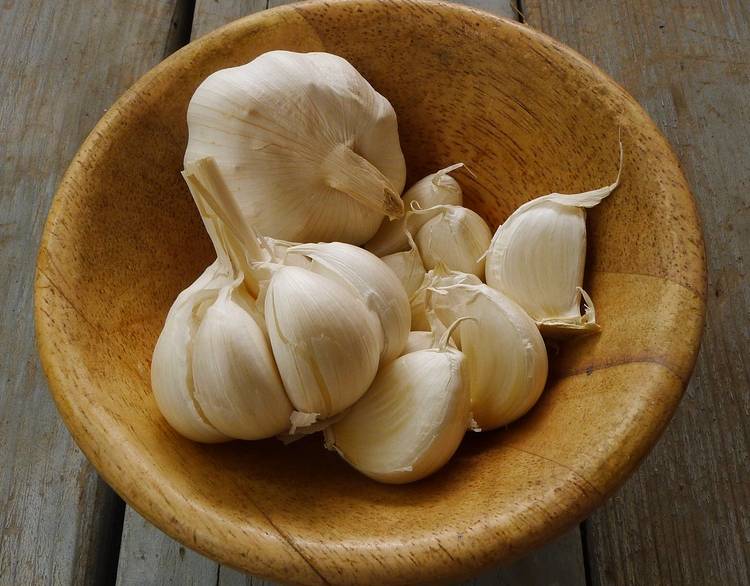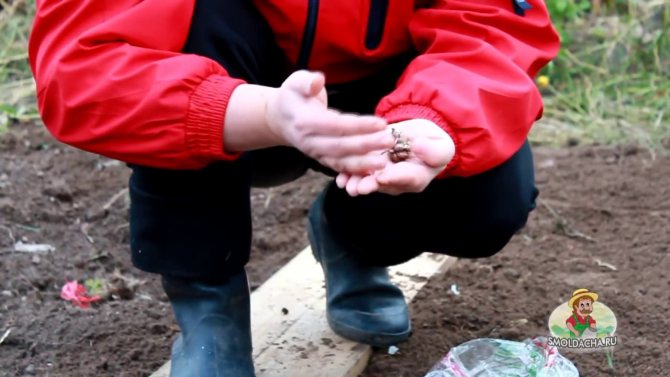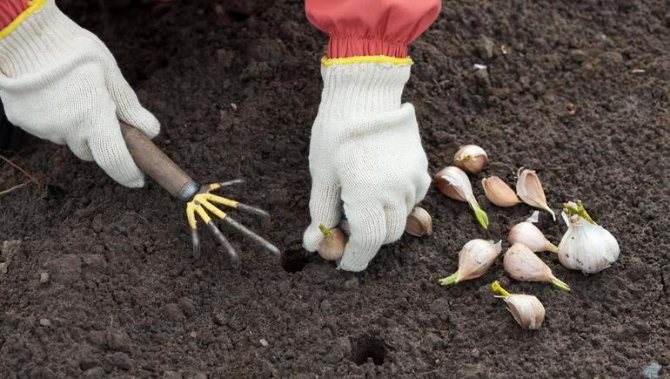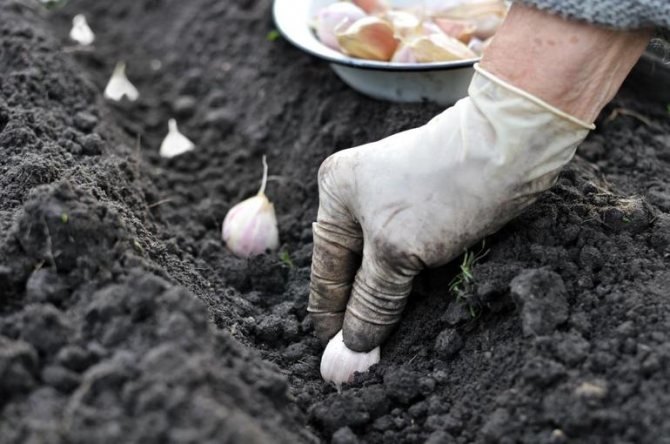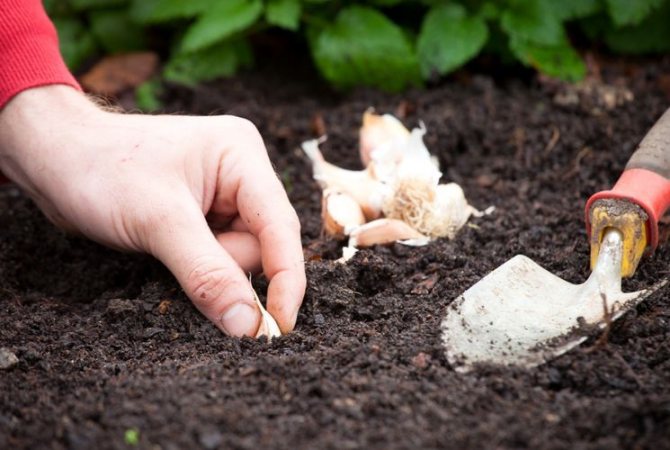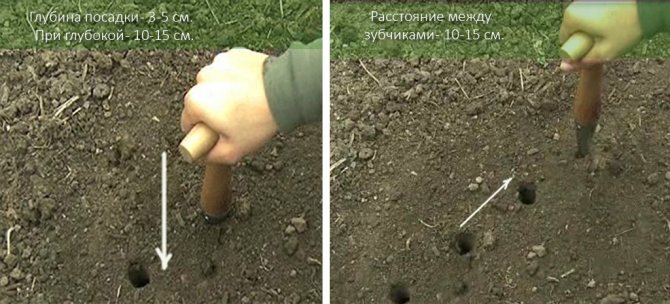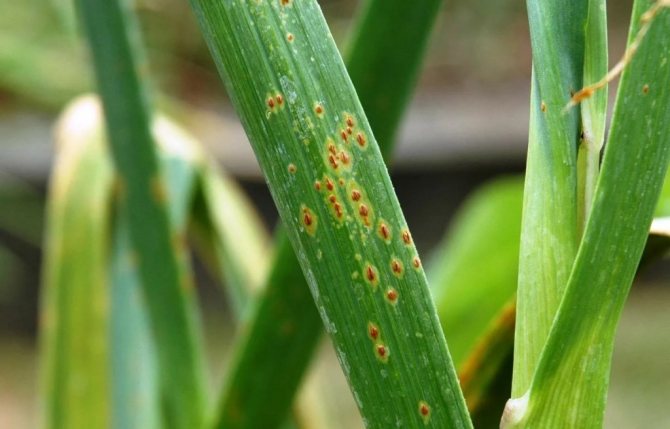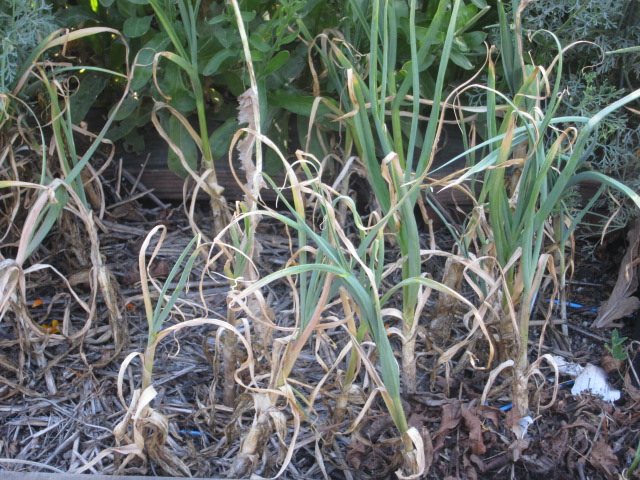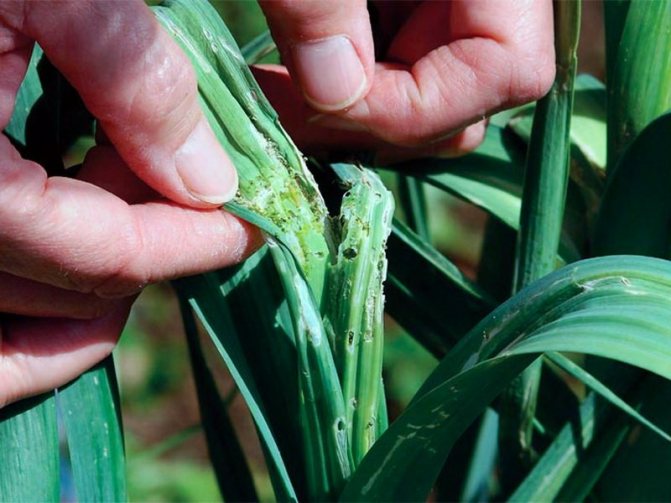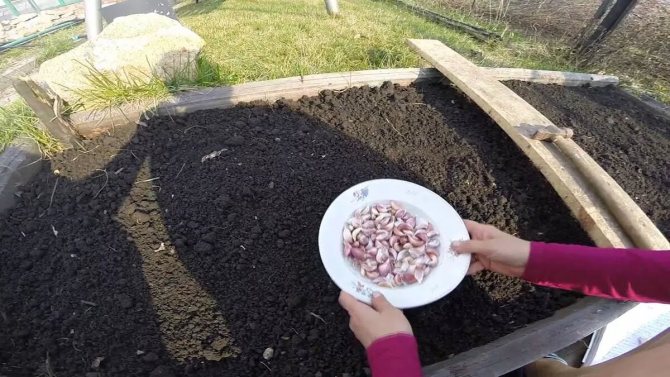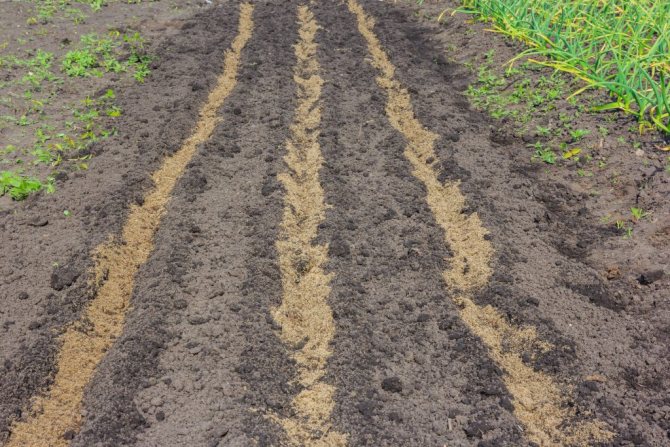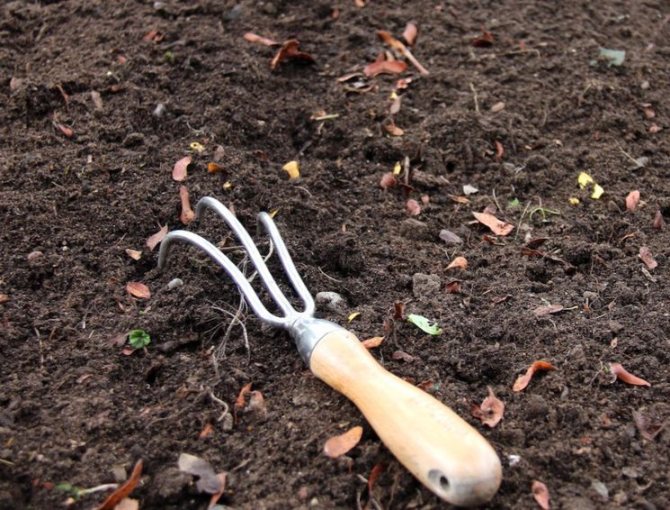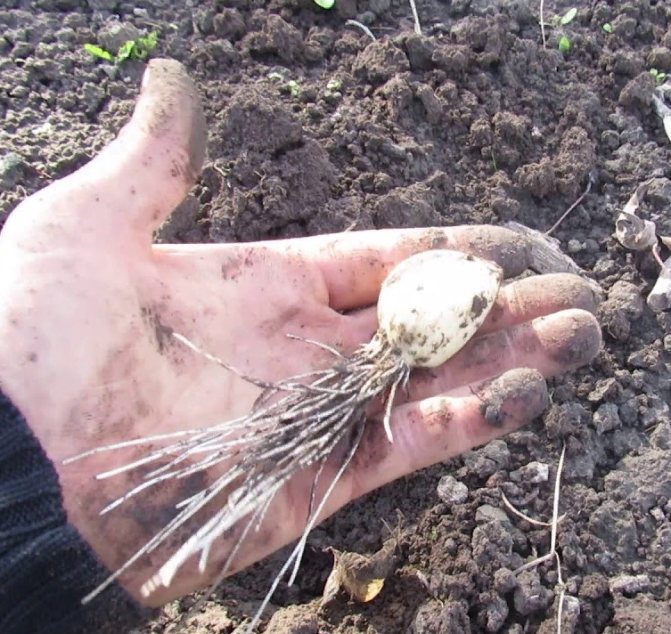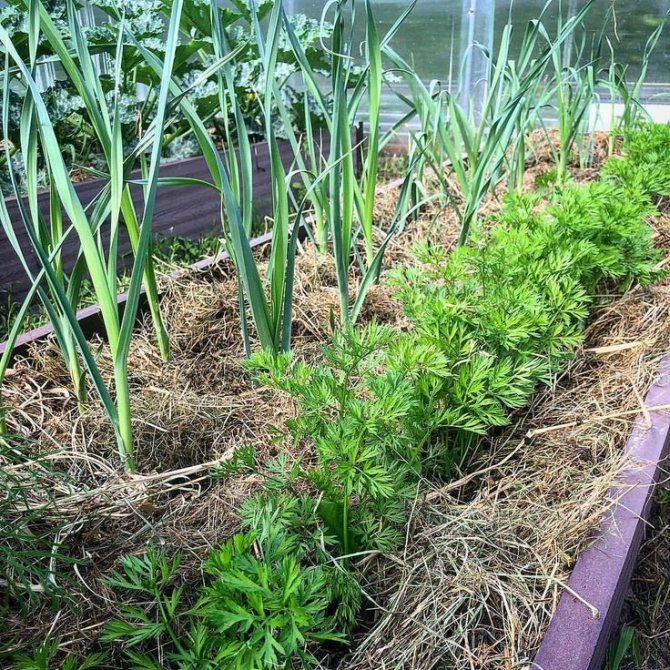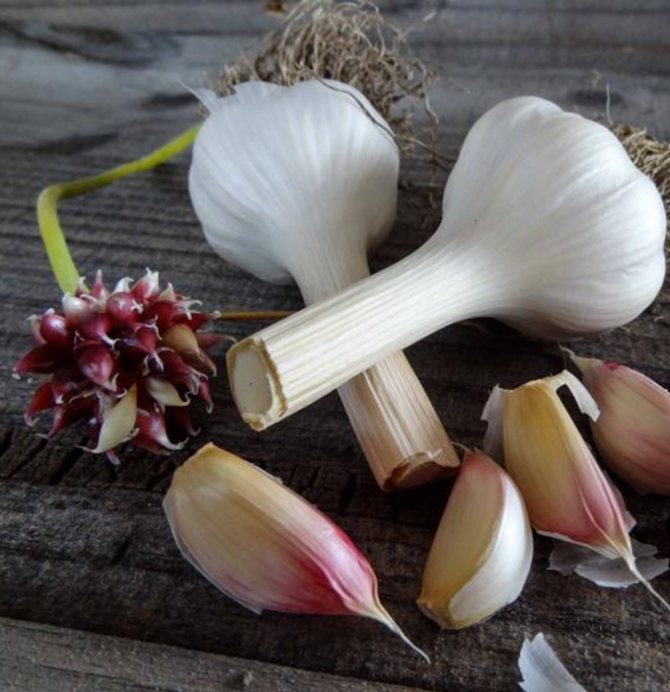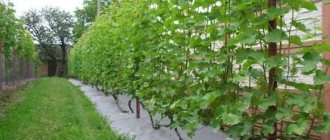Good afternoon, dear guests and blog readers!
I think everyone knows how difficult it is to do without this vegetable culture in the kitchen, because it gives dishes an exquisite, piquant taste and sophisticated aroma. And probably everyone, even children, has heard about the beneficial properties. Therefore, it is simply necessary to have it in every home!
Many will say that you can buy garlic in the supermarket, beautiful and flavorful, and you shouldn't even bother. But we do not know where and in what conditions it was grown, with what fertilizers it was fed. And for lovers of agriculture, it is a sacred thing to grow everything with their own hands. Therefore, I suggest growing your own large, juicy and tasty vegetable.
When planting, it is extremely important to follow the biological processes of the surrounding nature. Therefore, I propose to focus on these very processes, favorable dates according to the lunar calendar and, of course, take into account the climatic conditions of your region. And also follow the rules of soil cultivation, planting and care. Then you will have a huge harvest, which the neighbors will envy (just kidding) - they will be delighted!
Today we will plant winter crops with our teeth and in the summer we will collect gifts. This variety is planted before winter (in autumn), it will take root perfectly and grow all winter, without requiring special labor costs. Now is just the right time for planting, so I propose to read all the recommendations and tips that are collected in the article and boldly get down to business ...
And remember, the main rule is to love the land, and then reap incredible harvests!
Types and varieties of garlic
There are two main types of this crop: winter and spring garlic. Less common is a variety whose planting is not tied to a specific season. These differences also determine the rules for planting garlic.
Winter is known as a shooting crop. In the summer, he produces flower stalks. If planted in the spring, it will not reach full maturity. Thanks to the development of new varieties, winter garlic appeared, which does not release arrows. This greatly facilitates the care of the plant, since cutting off the peduncles is a rather scrupulous process. They must be removed as soon as they have formed, otherwise the heads of garlic will be small.
Planting of spring varieties is carried out in the spring. During the autumn period, he does not have time to take root, so his seedlings are usually thinned out, and the harvest is poor. The spring crop belongs to non-shooting species and reproduces only by teeth.
The planting scheme for garlic depends on its main variety. For example, the spring plant does not need to be deepened as much as the winter species of this plant require.
Varieties of winter garlic differ among themselves in the number of cloves, the size and shape of the head, the presence or absence of arrows and the color of the scales covering the cloves. In most cases, it is this type of culture that is planted. In the practice of gardeners there are popular varieties that have managed to prove themselves on the positive side: "Danilovsky local", "Komsomolets", "Gribovsky-60", "Otradnensky" and "Gribovsky jubilee".
Winter garlic care after planting
With the arrival of spring, the main work begins. One of the main factors in the formation of large heads of garlic is regular watering. It is a strong plant and is able to withstand the lack of moisture, but then small and stunted heads are obtained.To prevent this from happening, after the snow melts and the first green shoots appear, you need to carefully loosen the soil. The loosening procedure is mandatory, do not forget to carry it out after each watering or at least once every 3-4 weeks.
After the completion of loosening, the planting is watered abundantly with water. Regularity of watering every 5-7 days. If the weather is dry, then the number of days between waterings is reduced to 3-4. At the very beginning of spring, the plants need nitrogen feeding.
The first feeding should be carried out after the first 2-3 shoots have formed in the garlic. Apply nitrogen-containing fertilizer according to the instructions. The second feeding is carried out after 10-14 days, also with nitrogen, and the third - in mid-June, but this time potassium-phosphorus compounds need to be added.
You can choose any fertilizer available in the store. These 3 dressings will be enough for the garlic to thank the harvest. Do not forget to break off the garlic arrows as soon as they reach 10-15 cm in length. To protect plantings from pests, some gardeners recommend spraying the crop with a saline solution prepared at the rate of 100 grams of salt per 5 liters or a weak solution of potassium permanganate.
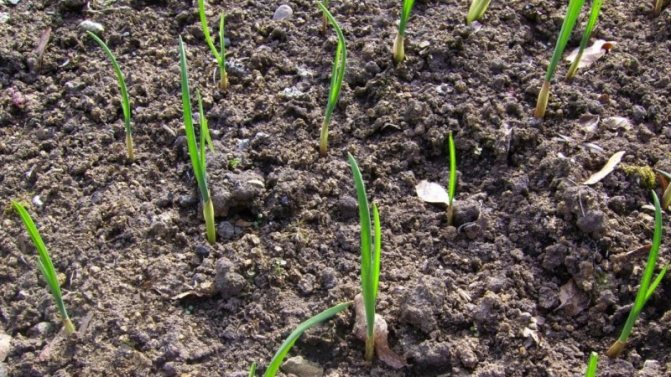

Timing
Planting garlic in the fall in each region is carried out in different ways. It depends on climatic conditions and changes in weather. In central Russia, planting work usually takes place in early October, in the northern regions - at the end of the first month of autumn. In the south of the country, this time falls at the beginning of September. The optimal time for planting garlic in the Moscow region was always considered the time that fell on the first half of October.
In recent years, the climate in our country has changed a lot and the autumn weather is full of surprises. It is important to monitor the precipitation and to approach the issue of planting deliberately. During planting, the soil should be moderately moist. You should also build on the weather forecast. If the garlic is planted too early and stays warm for a long time, it will release the greens. Upon reaching a certain growth of the green mass, with the first frost, the entire crop will be destroyed. Frost clings to small sprouts only on the top, so this will not particularly affect the future development of culture. It needs time to take root, but not let it grow. In garlic, this process takes place within one month.
In regions with a temperate climate, as a rule, the autumn temperature is set at + 10 ºС. Under such conditions, the timing of planting garlic in the Moscow region does not change much. Works in this region are carried out from September 20 to October 15. With sudden changes in temperature, gardeners need to learn to adapt to new conditions and choose more suitable days.
Many farmers are guided by favorable days for planting winter garlic according to the lunar calendar. When the moon is waning, in their opinion, this is the best time to land. Those who follow the signs choose the day of the Feast of the Intercession of the Most Holy Theotokos. Some dwelled on the fact that, if the weather is warm throughout November, planting work can be continued.
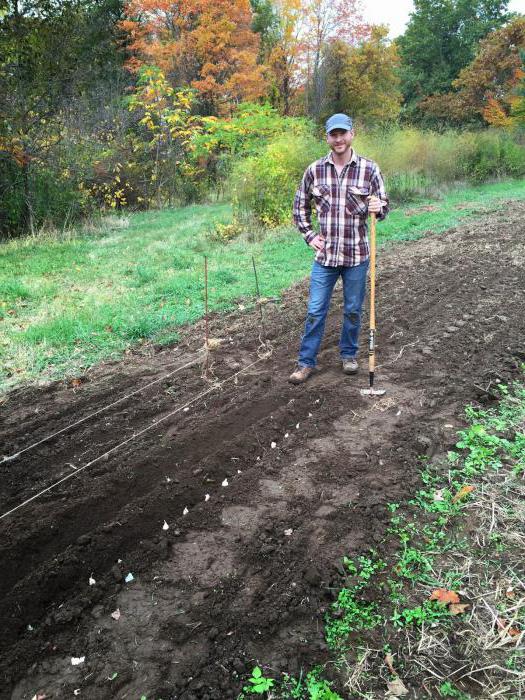

How to plant winter garlic in the fall
In addition to correctly determined planting dates, the yield is influenced by such factors as: careful selection of planting material, choice of location and arrangement of the beds, preparation of suitable soil and the choice of a predecessor.
After what culture to plant garlic before winter
When planting a particular crop, it is necessary to take into account which plant grew in this area in the previous season. This is due to the fact that different vegetable crops do not combine well, and some of them are capable of accumulating harmful compounds, and, as a result, hinder the successful development and growth of plants planted after them. Also, after them, spores and pathogenic bacteria can remain in the soil.To grow a healthy crop, you must follow the rules of crop rotation.
Since garlic has shallow roots, it is best to plant long-rooted plants in front of it. For the entire previous season, they will receive nutrition from the underlying soil layer, so the garlic planted in their place will receive unspent reserves of nutrients from the upper soil layer. These plants include almost all cereals, except for oats and barley. It is good to plant crops such as beans, peas, beans, squash, squash, pumpkins, cauliflower and white cabbage, dill, cilantro and parsley before garlic. The beds after peppers, eggplants, cucumbers and tomatoes are also suitable. Berry crops such as strawberries and strawberries are considered ideal predecessors.
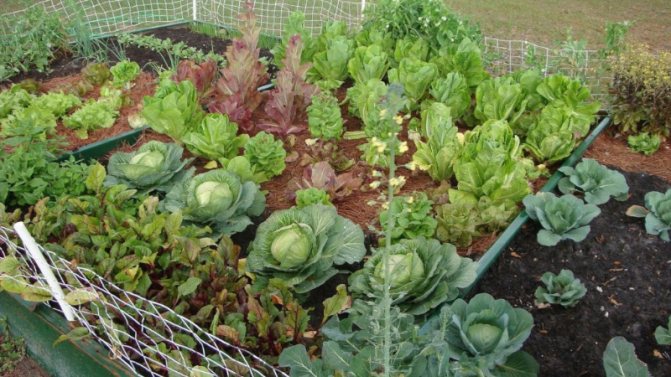

Choosing a place for a garden for winter garlic
The plot for the garden must be selected in advance. You need to start preparing a few weeks before planting, since the soil should settle a little. To do this, you need to dig it up on 1 bayonet of a shovel. At the same time, you should add the necessary phosphorus-potassium fertilizers, as well as ash at the rate of 1 liter. for 1 sq. m. beds.
When choosing a place, one must take into account the fact that garlic does not like dampness and close occurrence of groundwater, therefore it is better to place the garden bed on a small elevation. And since this spicy plant is a great lover of the sun, you need to make sure that there are no tall trees and various buildings nearby that can create shade. The bed must be positioned along the axis from north to south. The optimal width of such beds is no more than 1 meter, you can choose any length based on the amount of seed.
It is very important to properly prepare the soil. It should be remembered that garlic does not tolerate soil acidity, therefore, first of all, you need to determine the acidity indicator of the soil in the allocated area. A neutral indicator (no more than 6.5) is most suitable. If it is higher, then there is a need to introduce substances deoxidizing the soil, for example, dolomite flour. But the introduction of manure will not be beneficial, since it contains nitrogen, which can lead to an increase in green mass. It is also advisable to disinfect the soil with any of the copper preparations according to the instructions.
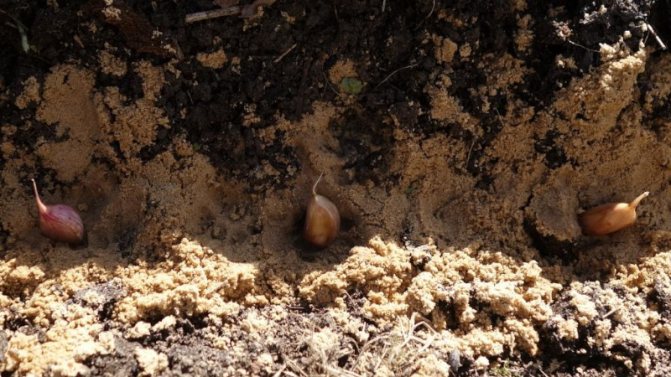

Planting winter garlic
First of all, you need to correctly select the planting material. It is necessary to take into account the peculiarities of the climate in the region and choose suitable varieties.
Signs of winter garlic suitable for autumn planting: the number of cloves in the head should be at least 4, they should be located around the central thickened rod in one row, the color of the shell is usually pink with a purple tint.
For 3 weeks, it is necessary to stratify the planting material by placing it in a cool room with a temperature of no more than 5 degrees.
Before planting in the ground, it is necessary to select deformed and diseased teeth, it is also desirable to hold the material in a weak solution of potassium permanganate for about half an hour. This event will reduce the risk of various diseases and protect against insect pests. After that, you can plant the planting material in the prepared soil.
Basic recommendations for the depth of planting teeth:
- To a depth of 4 cm... This planting depth is only suitable for regions with abundant snow cover. If it is not provided, the risk of freezing out for such seedlings is very high.
- To a depth of 12 cm... Suitable for regions where temperatures are low for most of the winter. Planting material will survive the winter better, but there is a possibility that young shoots will not be able to break through such a layer of soil.
The most common planting scheme is when the distance between the rows is no more than 20 cm, and between the teeth - up to 10 cm.It is advisable to pour a little sand into the hole before planting, this will serve as a kind of drainage. Sometimes they are planted in a checkerboard pattern with a distance between the teeth - 8 cm. With this method, more planting material can be planted. After planting the garlic, the garden bed must be watered and sprinkled with a layer of compost or sawdust mulch.
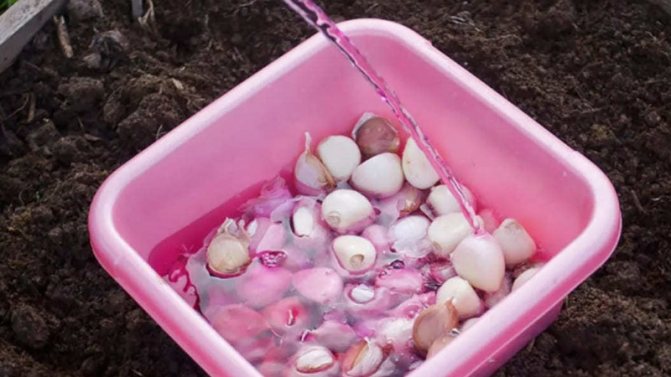

Reproduction
The most common way of growing garlic is when the head is divided into separate cloves, and then they are planted.
Seeds can be harvested from winter varieties for propagation of this crop. When you remove the arrows, some of the most beautiful and largest are left in the garden. By the end of summer, each peduncle forms many bulbs. They are removed after final ripening, without waiting for the moment when the upper shell bursts.
Having planted air seeds, next season it will be possible to harvest garlic sets. It consists of small bulbs, from which heads with several cloves subsequently grow.
When to harvest
When summer comes, gardeners think about harvesting. This time will differ in different regions. To clarify the date of collection, you can use the lunar calendar. But if it became noticeable that the feathers of the garlic turn yellow and the green ones no longer appear, and the stem itself falls to the ground, it is safe to say that the time has come to harvest the garlic.
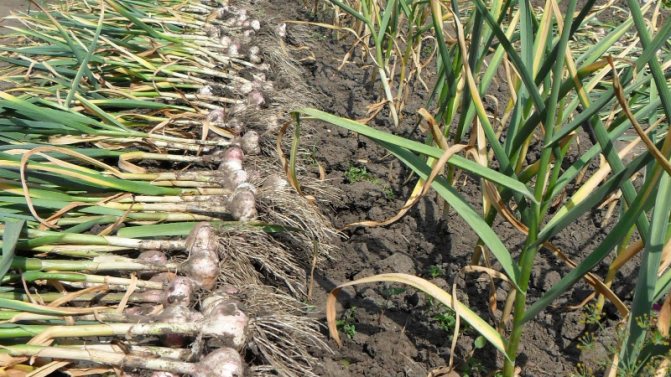

Spring
As already mentioned, the spring type of garlic does not produce flower stalks, so it is planted only with chives. Unlike winter varieties, it does not yield such bountiful yields. But its plus is that it is better preserved. Even in spring, the heads and chives of spring garlic have an excellent appearance. Some varieties can be stored for more than a year. Another difference of this species is the large number of cloves. The largest are selected for planting.
The planting work of the spring crop begins in April, when the daytime temperature stabilizes and will keep not lower than +5 ºС. Like winter varieties, it is planted according to a specific pattern. Garlic is planted in moist soil. You need to dig the grooves and fill them with water. When it is absorbed, evenly distribute the cloves at a distance of 7 cm.They should be deepened so that the top layer of soil covers the planting material by 2 cm.
Mr. Dachnik advises: an alternative method of disembarkation
Along with the usual method, there is another one - the lazy one. He is good in the following situations:
- the need to save space and time;
- single plantings to protect strawberries, shrubs, trees and other crops.
Step-by-step instruction
- Grades are taken with no more than five lobules in the head. The selection must be careful, the bulbs are hard, free from rot and disease.
- The upper scales are removed, the bottom is cut off from the roots, the stem is left about 5 cm high.
- The prepared material is soaked for a quarter of an hour in a weak saline solution (half a tablespoon of salt per liter of water).
- Planting depth - at least 10 cm, between the heads - about 30 cm.
- Food is required more plentiful than with a normal disembarkation. Fertilizer is added directly to the wells. Humus mixed with garden diamite (teaspoon).
- The head is placed on the bottom and slightly pressed down. If the soil is infertile, compost is placed on top.
Planting air seeds
Bulbs are planted on well-fertilized soil. It is fertilized with humus, compost and a complex of mineral fertilizers.
The scheme of planting garlic in autumn with air seeds differs significantly from the standard one. They are sown in long rows, the intervals between which are 9-10 cm, and the interval between the bulbs is 2. The grooves are made no deeper than 3-4 cm.
There is a well-known method of growing garlic from air bulbs. In the first year of planting, the formed bulbs are not dug up. They are left to grow for the next season and get ready-made heads of this culture.In this case, air seeds must be sown at the same distance as regular garlic cloves.
How to store winter garlic
There are many ways to store winter garlic, the most common are:
- in sterile glass jars,
- in a refrigerator,
- in a salted canvas bag.
The main thing is to follow the general rules. It is necessary to carefully harvest the crop and dry it within 10 days, then clean it of dirt, cut the stems and roots. Perhaps the most convenient storage method is a pigtail pendant.
Garlic is an unpretentious plant. This spicy vegetable comes to store shelves mainly from China, so there is a reason to grow it on your personal plot.
Planting one-toothed
Planting garlic sets gives very good results. First, there is a renewal of seed material, which must be periodically carried out to preserve the varietal characteristics of the crop. Secondly, very large heads grow from it. Such garlic does not get sick and is more adaptable to weather changes.
The bulbs are planted according to the general rules for planting garlic. They should not be deepened too much. If necessary, cover the beds with mulching material. For them, you can also create a layer of fertile shelter of peat or compost. Before frost, the beds need to be covered with more reliable material, for example, dry grass or sunflower husk. The suitable planting depth for garlic before winter is no more than 3-4 cm.
What to do if the garlic planted for the winter began to sprout (germinate)
It so happens that after planting in the winter, warm weather suddenly sets in and the garlic begins to grow. Is it worth it to be afraid and what to do if this happens? If the height of the shoots is less than 5 cm from the ground, then you have nothing to worry about. The plant is cold-resistant and winters well, but if the plant has grown much larger, take measures to provide additional shelter from frost. Cover with a layer of hay, straw, spruce branches. You can lose some of the plants, but not all. For the future, remember that winter garlic is not planted before October. Watch another video on this topic.
That's all for me. I believe that the harvest grown in the garden or vegetable garden will never disappoint you. Well, I say goodbye, see you at the logging site.
Sincerely, Alexander
Why this question arises
So, why the question arises, why plant garlic in the autumn before winter? Although most gardeners use winter garlic varieties, few can clearly explain its benefits. The main reasons why it is more convenient to plant a winter garlic variety are as follows:
- Less hassle in the spring. At a time when most crops are planted, wasting time on garlic is irrational.
- Shorter growing season. If we compare the time from the appearance of the first shoots to harvesting, then it is not much different. But winter garlic has an advantage in planting - while spring garlic will only be planted in the ground and does not even begin to grow, winter garlic will already throw out the first leaves. Due to this, it gives a harvest 3 - 5 weeks earlier than spring.
Winter garlic can be planted in a summer cottage and reduce spring hassles, while obtaining a larger harvest.
Additional nuances
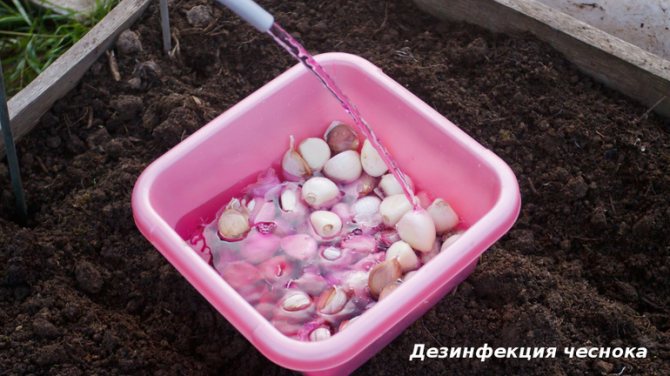

If we are talking about the processing of heavy, clayey soil, on which melt and irrigation water stagnates for a long time, you will have to work intensively with it to bring it back to normal. Such work can be difficult, requiring the use of special equipment.
However, if the size of the beds is relatively small, you can solve the problem manually. To give the soil looseness, every square meter of the bed must be deeply digged, diluted with peat and river sand.
If the situation looks the opposite and the substrate is too loose, consisting of sand, it can be compacted with clay and humus. In this case, the clay is pre-dried, and then crushed to small fractions, until it acquires a powdery state.Only after careful processing can it be applied to the soil.
Advice!
Farmers cultivating peat land with high acidity must bring, in addition to lime, a bucket of sand from the river and the same amount of clay. Ultimately, the substrate is carefully dug up.
Considering the option of traditional planting of garlic with the help of chives, it is necessary to make several rows in the garden, keeping a distance of 18-20 cm between each of them. In the case of wide areas, this distance can be increased up to 25 cm, but not more. The distance between the planting material is determined by its dimensions. So, the smallest bulbs are planted at a distance of 14-16 cm from each other, and the larger ones - 19-22 cm.The optimal immersion depth of the cloves in the soil is 4 cm.
When planting bulbs, you can follow the same principle and use a distance of 20 cm between the rows. But between the planting raw materials themselves, such a distance should not exceed 15 cm.
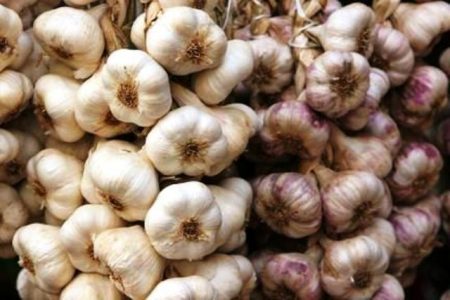

You may be interested in:
Winter garlic for planting in Moscow: where to buy at retail Colds slowly come, but in winter you can also do your garden and garden. In the garden, people prepare their plants for ... Read more ...
Possible problems and difficulties
With careful selection of seed material, garlic practically does not get sick and gives a good harvest. But there are factors that can destroy the plantings:
- Little snowy cold winter. If such a winter is expected, then immediately before the first snows, it is advisable to re-mulch the bed. The mulch will trap the snow and create an extra layer of insulation.
- High groundwater table. Garlic does not tolerate super-moist soil, the plant quickly dies. In such a situation, it is necessary to form a raised bed.
- Clay and loamy soils. If the fertile layer is thin, then it is necessary to reduce the planting depth. In loamy soil, garlic practically does not form a head.
In general, garlic is a fairly unpretentious culture. With a little experience and a well-established crop rotation, it requires attention only 6 times a year: during preparation, planting, feeding and harvesting.
Note to the summer resident
To grow garlic and get a high-quality harvest, you just need to adhere to simple rules. Namely:
- pick up a useful soil mixture for garlic;
- prepare the ground before planting;
- adhere to crop rotation;
- select garlic cloves at the planting;
- choose favorable days for this process;
- plant winter garlic according to the instructions;
- take care of the culture following all the recommendations;
- additionally protect the garlic from winter frost.
Neighbors and predecessors
Garlic is demanding not only on soil fertility and top dressing, but also on the quality of its site. So, you cannot plant garlic in the same place as a year ago. In general, the place where garlic has already grown should be used for other crops for the next 3-4 years, but not for a new harvest of garlic.
Garlic also has a bad neighborhood with:
- onions;
- potatoes;
- carrots;
- beets;
- tomatoes.
The reason lies on the surface: these crops have similar pests and diseases. And ideally it will not work to rid the soil of them.
It is best to plant garlic where it was grown:
- cucumbers;
- pepper;
- cabbage;
- peas;
- beans;
- zucchini;
- pumpkins.
By the way, garlic repels some pests due to its fungicidal properties. For example, this culture effectively fights carrot and onion flies. For this reason, garlic can also be used as a protector for plants such as strawberries, strawberries, carrots, cucumbers, tomatoes, and potatoes.
What is the difference from spring planting?
Despite the fact that winter and spring garlic are practically the same crop, there are differences in planting. Winter garlic is planted deeper than spring garlic; planting in several tiers is allowed. At the same time, the planting scheme for winter varieties can be more frequent than spring varieties, this practically does not affect the harvest.
Less soil requirements - if a delay in spring due to low temperatures can become critical and affect the harvest of garlic, then early or late planting does not have such an effect (when to plant garlic in spring?). In any case, the clove will take root and sprout quickly in the spring, minimizing miscalculation.
How to plant winter garlic in spring is written here, and from this article you will learn how to plant spring garlic in spring.
Storing garlic
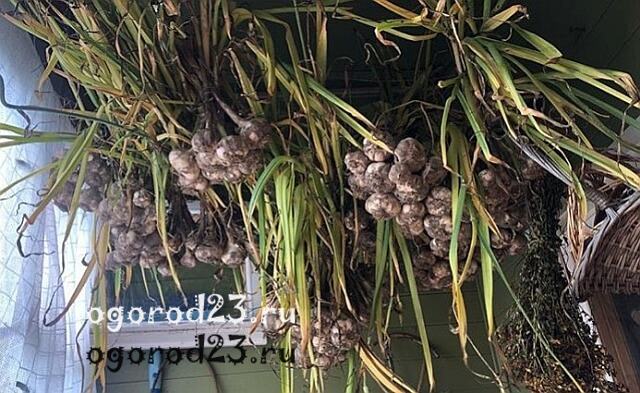

For storage, ripe, mature, well-dried heads with whole intact scales are selected. The best temperature for storing at home is + 18 ° C. It is better to store garlic in mesh bags, pigtails or cardboard boxes.
One last thing ... Avoid planting garlic from grocery stores or supermarkets, as growing garlic runs the risk of introducing serious viral diseases to your site.
How to distinguish a winter variety
In order to grow a crop for the winter period, you need to figure out how to distinguish winter varieties from spring varieties, which are usually planted in spring. For convenience, we have summarized all the signs in a table:
| Signs of a winter variety | Signs of a spring variety |
| The head has 5-10 large teeth, while they are covered with a purple sheath. The teeth are located one at a time strictly around the solid middle | There is no rod in the head, the number of teeth is usually about 20, arranged in several rows |
| The taste is pungent and pungent | Soft taste |
| Not stored in winter | Stores well, until the onset of spring |
Precursors of garlic when planted before winter
All novice gardeners are concerned about the question: After what crops to plant a vegetable?
And in order to exclude disease damage and re-plant in this place after 4 years. We will observe the crop rotation.
- Good predecessors are tomatoes and cucumbers.
- It is not recommended to plant after onions, potatoes.
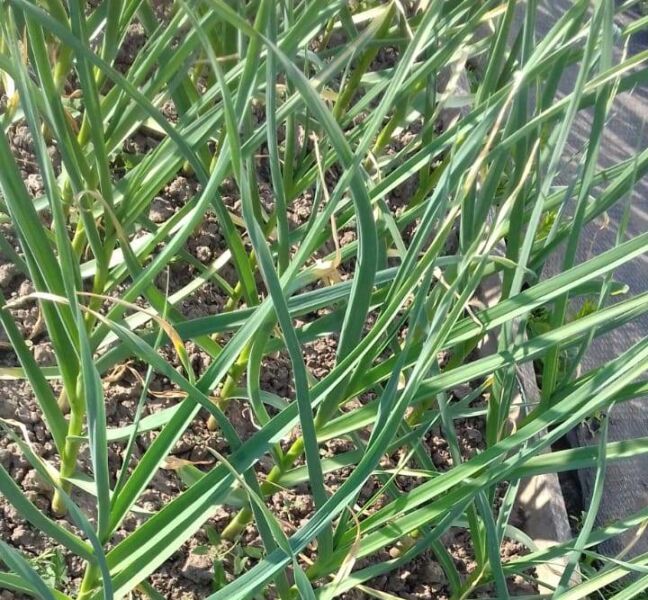

The spice makes high demands on fertility and does not like acidic soils.
Diseases and pests
| Rust Symptoms:
Prevention:
Treatment:
|
| Fusarium Symptoms:
Prevention:
Treatment:
|
| Stem nematode Symptoms:
Treatment:
|
After what crops can be planted: choosing a place
One of the most important and crucial stages in the agricultural technology of this crop is planting garlic in the fall. It is important to choose the most suitable place for him. This culture loves light fertile (preferably sandy loam), air and moisture permeable soil. Her reaction should be neutral, garlic does not like sour soil.
The place under the beds should be even, well lit by the sun. However, it should not be located in a lowland with groundwater close to plants and such on which water stagnates - in wet soil during the winter, the roots of plants can rot, and during the growing season, excessive moisture will provoke the growth of green mass, and not bulbs. You should not choose a place for garlic plantings, located near outbuildings with pets or birds, so that they cannot damage them.
The best plot for winter garlic in home garden beds is located near the fence on the south side. The fence will protect the landings from the cold wind, and in winters with little snow, it will keep the snow on the ground.If the site is in an open place, then in case of a snowy winter, you need to stock up on good covering material:
- dry leaf;
- peat;
- spruce branches;
- sawdust.
You need to cover the beds only just before the very frosts, and not soon after planting the cloves, so that they do not germinate under a “warm blanket”. The layer of covering material needs to be done the more, the colder it is in your area.
The best precursors for garlic are all pumpkin, nightshade, and legumes with a short growing season. You need to remove them from the place of growth intended for garlic at least a month before planting, so that after collecting them, the soil can recover. For the same reason, planting garlic after potatoes is possible only if it belongs to the early or mid-early varieties.
But after carrots and other autumn root crops, it is better not to plant garlic - since they are harvested late, the earth will not have time to renew its resources by the time of planting. It is possible to plant a culture in the same place only after 3 years, as well as to place it where its relative, an onion, grew.
Further care
In the fall, no additional care is needed, the garlic will take root and freeze at the first frost. After the snow melts, it is better to remove the remains of mulch - this way the earth will warm up faster.
When the first shoots appear, the plants must be fed with a solution of mullein 1 to 10 at the rate of 3 liters per square meter. After 2 - 3 weeks, feeding is repeated, you can additionally add 1 tbsp. spoon of nitrophosphate on a bucket. This will accelerate the growth of green mass and the development of the plant as a whole.
After the arrow appears, the garlic must be fed with wood ash. A glass of water is dissolved for 10 liters and 1 liter is added. per sq m. This will speed up the formation of heads and increase the yield.
Important! After the arrows appear, they must be broken. At this time, the plant lays a head and forms seeds for propagation. Therefore, if you do not break out the arrows, then the power of the plant will be spent in both directions. Therefore, it is enough to leave only part of the arrows for the formation of seeds for the next year.
Caring for winter varieties of garlic is easy. The plant tolerates winter cold well, so it does not need to be strongly protected from frost. True, in the Moscow region, the culture is recommended to mulch (cover with fallen leaves and soil) immediately after planting or after 2-3 weeks. As soon as the first frost sets in, the garlic beds are covered with a layer of crushed manure, humus or peat, and a plastic wrap or roofing material is placed on top.
In the spring, the created film cover is removed and the mulch layer is immediately removed. This will allow the plant to release green shoots faster. If a shooting variety of garlic was chosen for cultivation, then with the appearance of arrows (usually the plant throws them out in June - July), they should be broken out. It is advisable to do this when the arrows are 10 cm high. Otherwise, they will take nutrients from the garlic bulbs and reduce yields.
Planting garlic in the Moscow region requires several dressings. For the first time, it is recommended to use urea, mullein or bird droppings. The second top dressing should be ash (200 g of ash are stirred in 10 liters of water). Water the garlic plantings when the plant is in the active growth phase. During the ripening period of garlic, watering should be moderate.
How and when to plant garlic bulbs before winter
To renew and improve our culture, we grow airy bulbs from winter garlic. And then an excellent one-tooth will grow from one small grain. And it will be the best planting material for the future harvest.
When to plant garlic bulbs in spring or autumn? There is an unequivocal answer to this question: planting with bulbs is done in the fall.
We plant seeds (bulbs) from September 5 to October 10.
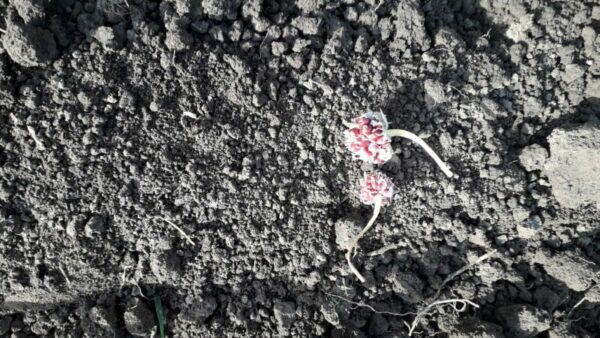

Before sowing, we release the air bulbs from the inflorescence, select the large ones and sow before winter.
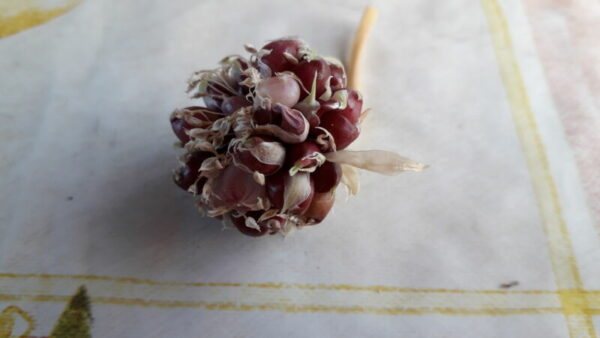

How to process the seeds is described above.
1 year. You need to plant the bulbs at the same time as the main cloves on the head. The recommended groove depth is 5 cm. Step 4-5 cm.
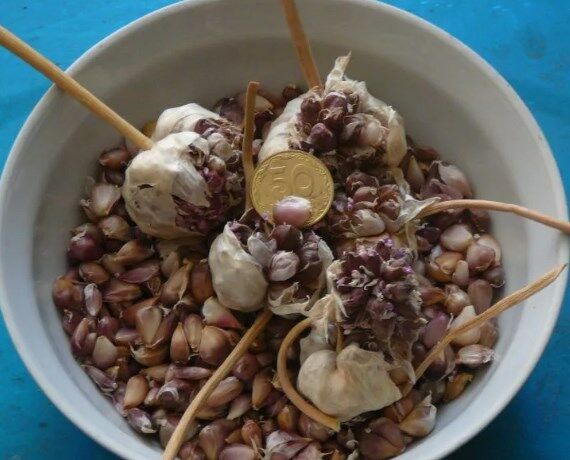

2 years. You will need to dig it up in the middle of next summer, when the greens begin to turn yellow. In the first year, these will be small teeth.
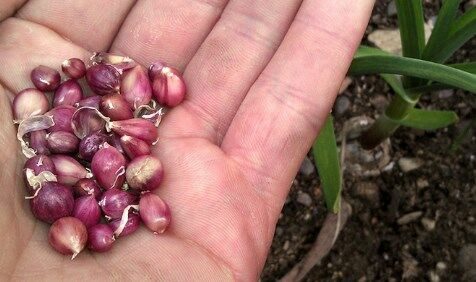

In autumn, we plant our teeth together with the main planting material on the head.
2 years. In July, with the main harvest, we collect one-toothed bulbs. We plant them in the fall.
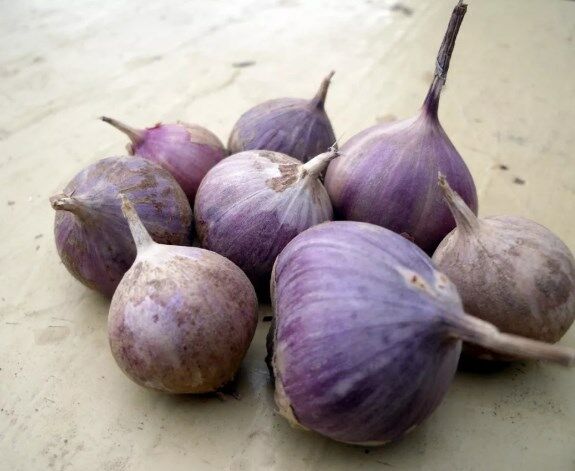

3 years. In the next season, large heads (usually with 4 teeth) will be waiting for you in your garden.
To save a year when growing from bulbs, do not dig it out in the first year, leave it in the garden. The main thing is that the beds are not waterlogged, otherwise the one-toothed teeth can rot.
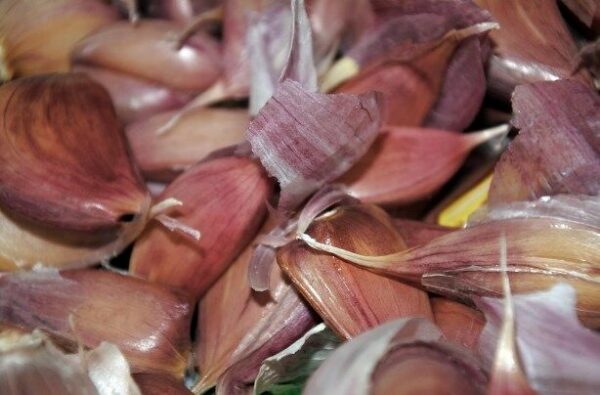

Heal your garden!
What kind of soil is needed
Ideal soil for garlic:
- loose (well permeable to air and moisture);
- with neutral acidity;
- fertile enough.
Based on this, it can be argued that garlic feels good in black soil or loamy soils. If the soil is heavy, then it is better to add river sand and peat to the holes. Garlic will also grow in sandy soil, but you will have to water and feed it more often.
But it is better not to use too acidic or alkaline soil for planting garlic.
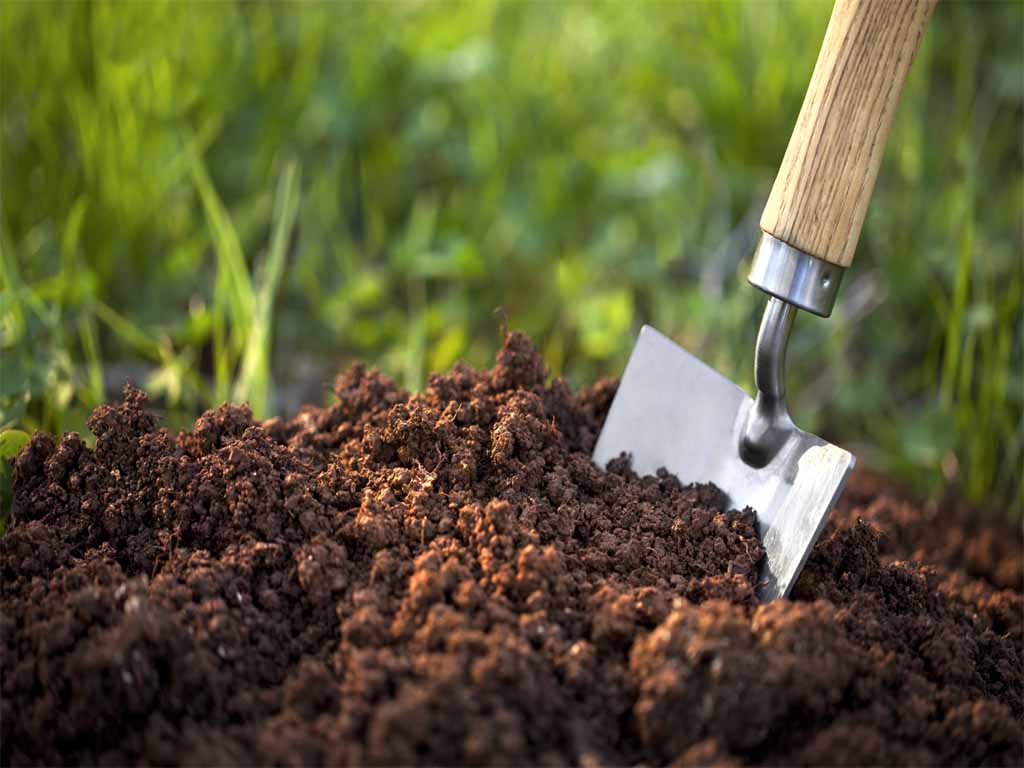

Garlic needs loose, fertile soil
Garlic neighbors in the garden: joint planting of garlic with vegetables
I really love planting together: it saves space and garlic protects many plants from misfortunes.
Garlic accumulates a natural fungicide - sulfur. It will help crops prevent disease
The spice will feel great next to the entire Rosaceae family, one of which is strawberry. It scares off aphids. Beets, tomatoes, salads and thyme will also be happy with such a neighborhood.
There is one VERY big MINUS in this landing. A pest that is very attracted to garlic, spoils strawberries and is difficult to get rid of - nematode!
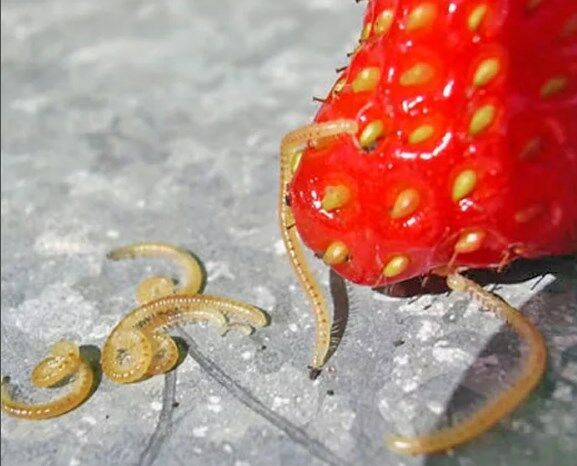

Joint planting of garlic on a bed with strawberries is carried out in the same way as on a separate bed.
Planting depth - 5-6 cm. Further planting, mulch with well-ripened compost or humus, after mixing organic matter with wood or straw ash. It is not out of place to additionally insulate the garden bed. A layer of straw, grass-siderates or fallen leaves will protect the plants from freezing in the harsh winter with little snow.
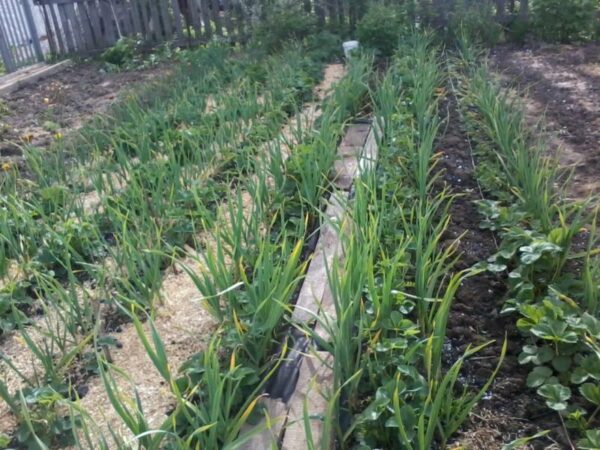

Planting garlic and carrots together is acceptable. There is an opinion that the orange beauty will improve immunity against infections. In this case, the spice should be planted along the edge of the carrot bed.
Since the ripening time and planting time for these crops are different, then the garden should be marked in advance.
When landing, do not forget:
- the best neighbors for garlic are carrots, cucumbers, beets, tomatoes and strawberries;
- poorly tolerates the neighborhood with cabbage, peas and beans.
Useful video
If you find an error, please select a piece of text and press Ctrl Enter.
We suggest you familiarize yourself with: How to freeze peppers for the winter in the freezer
Marks: winter, Moscow region, planting, scheme, garlic
About
«Previous post
How to choose seedlings
The planting material should strive for the ideal and be prepared flawlessly. For planting, the garlic bulbs should be large and even, consisting of no more than 5-6 cloves, in order to reproduce in the future harvest the same flawless vegetable in all respects.
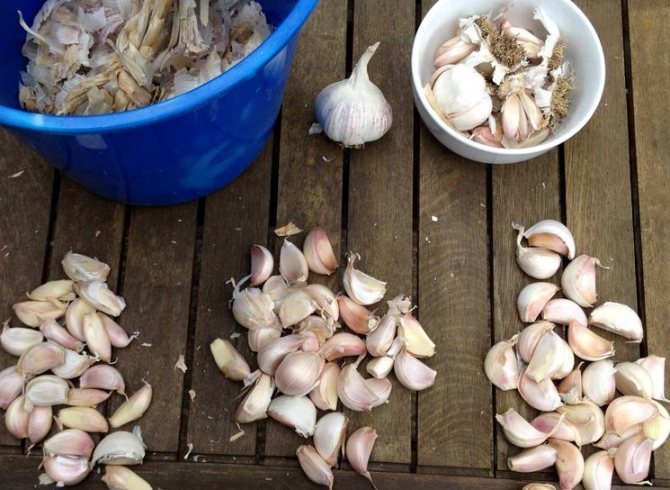

You need to divide the onion into cloves before processing them for planting. Each tooth is meticulously inspected and defective ones - with mechanical damage, with a damaged shell, traces of mold, rot and other defects - should not be used for sowing.
Preparing the garden for planting garlic
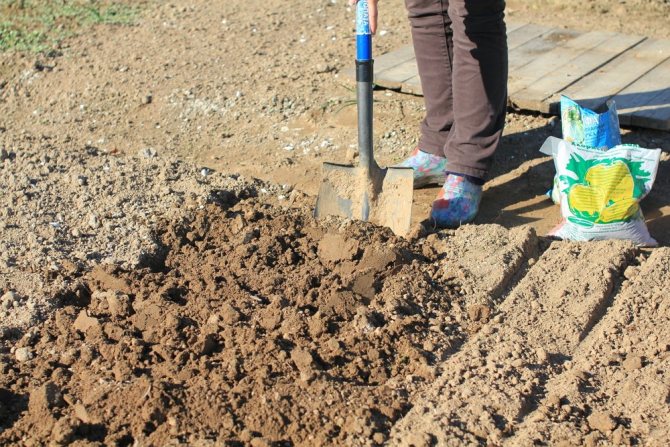

Garlic prefers fertile soils with neutral or low acidity.It is important to take into account that not all predecessors have a good effect on the vegetable, so it should be taken into account where it is possible and where it cannot be planted.
The site is dug up 1-2 weeks before the planned landing so that the soil settles. If the fall is dry, the soil is moistened to increase the density. Otherwise, the planted teeth will go to a depth, which will lengthen the period of vegetable germination in spring and negatively affect the size of the crop.
To increase the nutritional value of the soil by one square meter, you should add:
- humus bucket;
- a glass of chalk;
- 2 glasses of ash;
- 2 tbsp. l. potassium sulfate;
- 1 tbsp. l. superphosphate.
A bed 100 cm wide and 25 cm high must be placed in an open, sunny place. To prevent the development of fungal diseases, 3-4 days before the planned planting, the soil is watered with copper sulfate (1 tablespoon per 10 liters of water).

